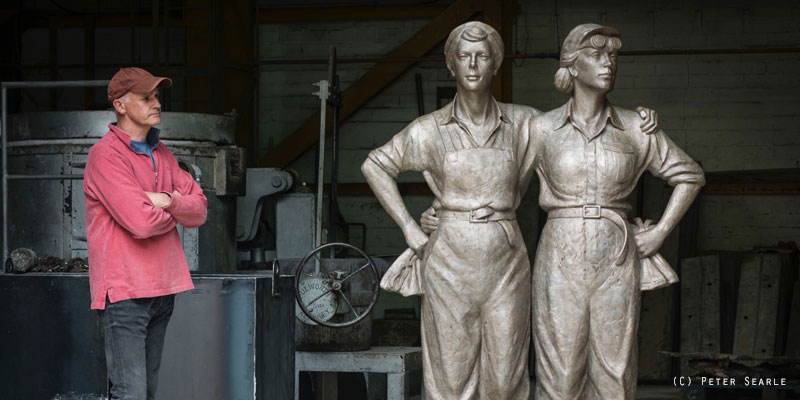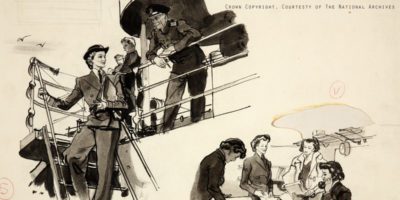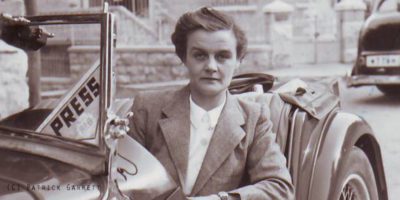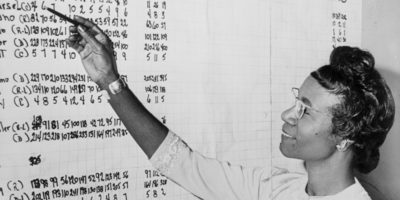Martin Jennings makes portrait sculptures and public statues, often incorporating carved inscriptions into the work, having been commissioned by the National Portrait Gallery, St. Paul’s Cathedral, the Palace of Westminster, the University of Oxford and many other national institutions. Two of Martin’s statues were installed in 2016 – the first commemorated the “Women of Steel”, who worked in the armaments industry during WW2 and was sited in front of Sheffield City Hall. The second paid tribute to Crimean War nurse, Mary Seacole, and was positioned outside St Thomas’ Hospital in Central London.
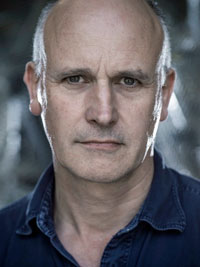
“…Apparently only 15% of statues in this country are of women, and of course that’s ludicrously unjust. Things are changing but only very slowly. Astonishingly no named woman of mixed race had been commemorated with a statue in this country before Mary Seacole’s went up last year…”
Becoming a sculptor
I’ve gradually moved into sculpture. I trained as a calligrapher and carver and designer of lettering inscriptions, so when I left art school in 1980 I set out to do any kind of jobs that involved carving inscriptions, that’s to say tablets for buildings, gravestones, and so on. I gradually started to make figurative sculpture, studying part time at the John Cass Art School in East London.
I built up a portfolio of portrait sculptures, and increasingly, full sized figure sculpture and statues. It’s all progressed over three or four decades, and gradually moved from one kind of sculpture to another. At the moment, I’m working full time on larger than life size figure sculptures, which are cast in bronze. I model them in clay, on a steel armature, and then put them through the bronze foundry that I use. We see each commission right through from original concept to installation.
Recent monuments to women
Two of my most recent commissions celebrating women (Mary Seacole and Women of Steel) started out as competitions, where a number of sculptors were invited to come up with ideas, and in each case mine was eventually chosen.
These commissions tend to happen because people coalesce with the conviction that a monument needs to be raised to remember a particular person, and a trust or charity is usually formed, which then disburses at the end of the commission.
Mary Seacole
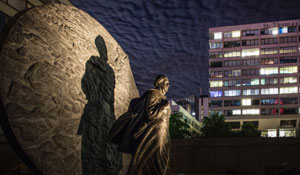
When I was commissioned to make a monument to Mary Seacole the brief was to include either light or sound, so I chose to give her an illuminated backdrop of the surface of the ground in Crimea, where she had performed her work as a nurse in the mid-19th century.
That involved going out to Crimea and scanning a patch of the ground very near her base, bringing it back, reproducing it through a 3D process and casting it in bronze, so now her shadow falls onto the land she once trod. I think that added something important to the figure of Mary herself, striding purposefully towards the battlefield.
Women of Steel
In the case of the Women of Steel sculpture, the commission was from Sheffield City Council. Over the years there had again been an increasing conviction that women who worked in the steel industry needed to be commemorated as a group. It’s not a statue to anybody individually, but rather it’s a commemoration of the many women in the 1940s who had taken the reins of the industry when all the men had gone off to war.
Their conditions were very tough. They worked seven day weeks. They were exhausted because it was hard, physical work. These were young women who’d come out of shop work and domestic service, and suddenly within days they were wearing overalls, they were up cranes and were hammering steel.
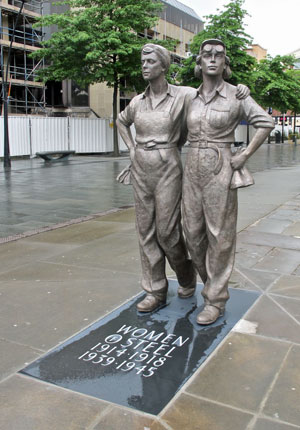
It was only their camaraderie that got them through, so I made a sculpture which expressed that camaraderie – two women, one a welder, one a riveter, walking along arm in arm in a jaunty way. I hope this expressed some of the energy and buoyancy they had, and indeed they needed, to get through such tough work.
I put their fists on their hips as a kind of symbol of defiance against the enemy, and of course people now link arms with it. I never even thought of that when I was coming up with the concept and putting it up. Of course, now it seems completely obvious that people would do this! There are sometimes wonderful, unexpected bonuses to each job. Sometimes you do something with the conviction that it means one thing, and to everyone else it means another.
Historically so many monuments to men have been of stand-alone individuals. One of the great things about the Sheffield piece is that it celebrates not just one person’s achievement. but the achievement of women binding together and doing something as a community.
The monuments we erect reflect what our society values
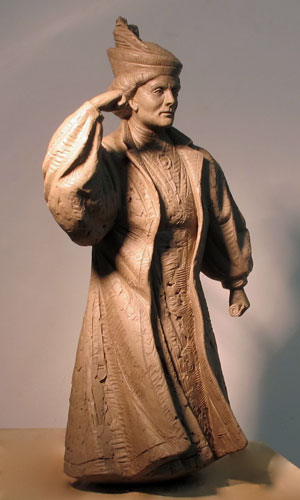
Apparently only 15% of statues in this country are of women, and of course that’s ludicrously unjust. Things are changing but only very slowly. Astonishingly no named woman of mixed race had been commemorated with a statue in this country before Mary Seacole’s went up last year.
Now there are a number of projects to erect statues of women, notably the competition recently set up in Manchester to choose a famous woman to commemorate in the city. There are a considerable number of statues already in Manchester and only one is of a woman – Queen Victoria.
There was a city-wide vote to determine which daughter of the city was thought to have contributed most and Emmeline Pankhurst was chosen. There’s a competition between various sculptors to come up with the chosen design. I’m on the list for that.
The democratisation of the commissioning of public art
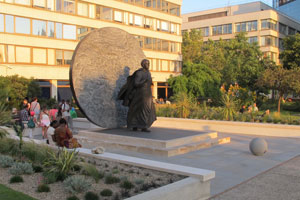
For the Mary Seacole monument, some people were contributing £5 or less, some people a great deal more. Thousands of people wanted to know that they had played a part in its creation.
My favourite female sculptors
Barbara Hepworth was a wonderful sculptor, as great and often greater than her fellow sculptor from Yorkshire, Henry Moore. There was a purity of approach that she maintained throughout her career that can’t quite be attributed to Moore, genius though he was.
Nowadays there are some terrific female sculptors. I like a lot of what Rachel Whiteread does. Liz Frink’s work is fantastic, deeply rooted in drawing. Emily Young carves extraordinary, large angel heads, which I always love seeing. Ann Christopher makes superb monumental bronzes.
Kathleen Scott was a very good sculptor. She was the widow of Scott of the Antarctic, Robert Falcon Scott and made his statue in Waterloo Place in London. In fact, she was the grandmother of the sculptor Emily Young, who I mentioned earlier. There was a family tradition there. We have a lot to learn from all these artists.
A lifetime commitment to sculpture
Working as a sculptor is a lifetime’s commitment. You might as well regard the first couple of decades as sketchy, a period when you’re finding out your own direction. For me it wasn’t until after that that the main work started.
A sculptor needs to fit his or her life round his or her work, rather than the other way round. The work always comes first and you have to duck and dive to get the next piece done. Of course, what comes first is a moot point as soon as you’re the parent of young children!
If you do well financially, that’s a bonus, but what really matters, and what keeps you going throughout your lifetime, is taking pleasure in your work and finding meaning in what you do. You just have to love doing it, and be constantly looking for the next opportunity to get to work.
Right now in the studio
At the moment, I’m in the middle of modelling a big sculpture of George Orwell for BBC Broadcasting House. That’s a particularly challenging piece and he’s very interesting physically to sculpt. He was built like a scarecrow. For the last five years of his life before he died of TB at the age of 46 he was skin and bones. I’m depicting him in a scruffy old Etonian suit, leaning forward, with a roll-up between his fingers. He was 6’3” tall and he had size 13 feet.
These days he’s continuously being referenced in terms of post-factual news. People keep saying they wish he was around today. Wouldn’t it have been interesting to hear what he had to say about the current situation? It’s remarkable how precisely he anatomised the different ways in which language can be distorted for corrupt political ends.
http://www.martinjennings.com/

